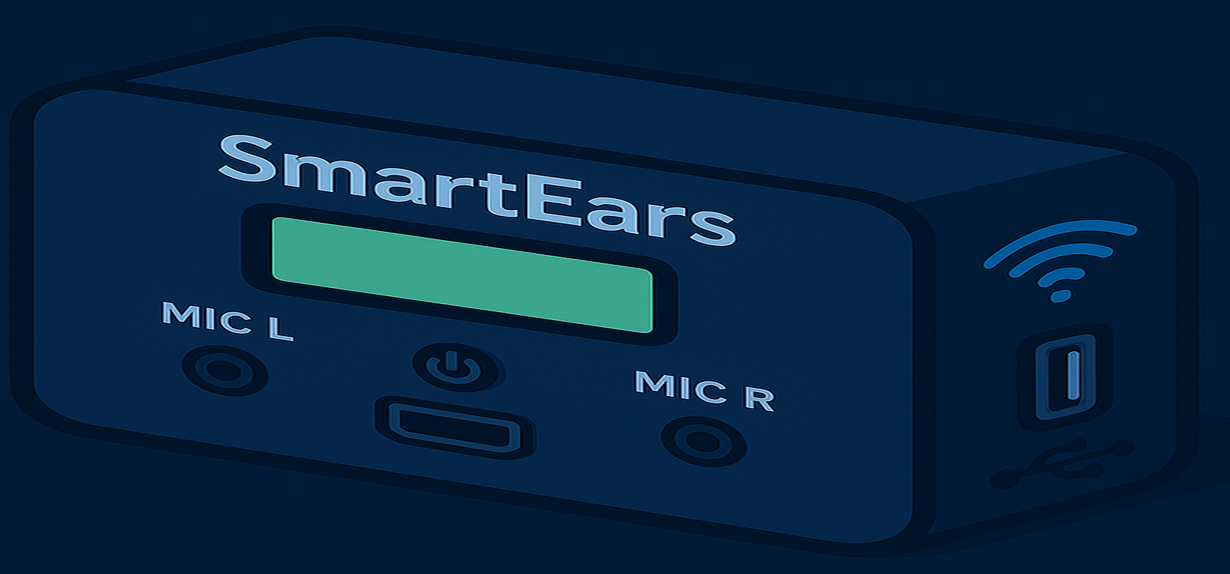What is SmartEars?
Overview
SmartEars is a compact, embedded AI device that listens to sound, interprets it with onboard intelligence, and responds instantly — offline or connected, depending on your application. It’s a blend of audio hardware and custom software, built around open tools and designed for your specific acoustic needs.
Custom Hardware Options
The physical setup of SmartEars depends on your application. From industrial enclosures to discreet residential units — the casing, connectivity, power source and output interface are fully customizable.
Typical dimensions: The core SmartEars unit fits within a compact enclosure of approximately 9 × 6 × 3 cm. The final size may vary depending on added components like battery, display, or wired outputs.

(Visual impression of the SmartEars casing – size and ports vary per setup)
How It Works
- Sound Capture: Dual MEMS microphones on the ReSpeaker 2-Mic HAT capture stereo audio.
- Spectrogram Analysis: Real-time FFT + Mel filterbank processing converts sound into a time-frequency representation.
- AI Classification: A lightweight TensorFlow Lite model detects patterns like speech, alarms, or silence.
- Response: Based on detection, SmartEars can trigger a light, alert a system, or perform a custom action — either locally or via network connection.
SmartEars doesn’t record everything — it listens for meaningful change. Unlike cameras, it doesn’t capture images or identities. It detects what matters: a sudden alarm, a quiet room that shouldn’t be quiet, a sharp noise, or a call for help. Or the subtle shift in sound from a machine that normally hums steadily — a sign of wear or failure that operators might overlook until it’s too late.

(Signal flow: from sound capture and spectrogram to AI-based classification)
Built With
- Raspberry Pi (or alternative embedded board)
- Python (SoundDevice, NumPy)
- Real-time buffering and spectrogram generation
- TensorFlow Lite for inference
- Optional OLED, GPIO output, WiFi, battery power
- Can be adapted to other platforms (e.g. ESP32 or STM32) for low-power or compact applications
Home | Use Cases | Dev. Process | Contact

